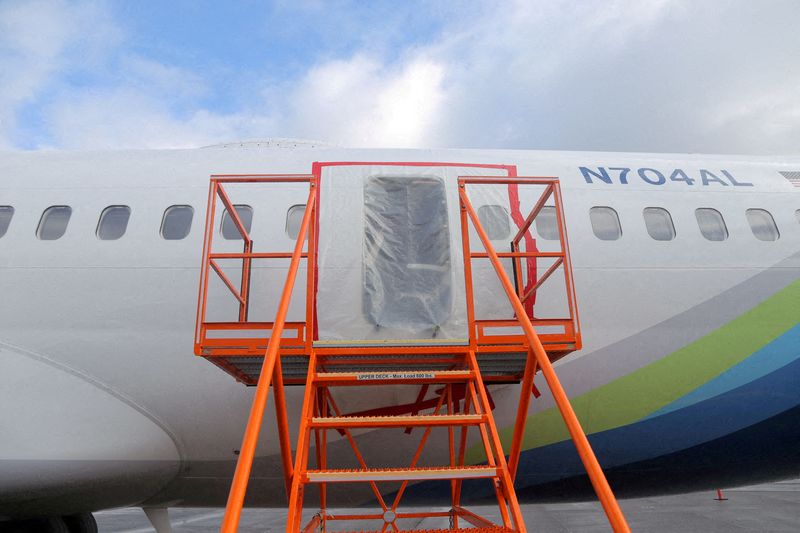(Reuters) – The door plug that blew off an Alaska Airlines MAX 9 jet this month was removed for repair and reinstalled by Boeing’s <BA.N> mechanics at its Renton assembly line, the Seattle Times reported on Wednesday, citing a person familiar with the matter.
Boeing declined to comment on details that are under investigation by the National Transportation Safety Board.
The report follows an earlier one from Reuters that said Boeing has a key role in installing and checking the part, made by fuselage supplier Spirit AeroSystems, which was spun off from Boeing in 2005.
Sources told Reuters that Boeing typically removes the panel and replaces it, while a source familiar with Boeing’s standard industrial processes insisted Boeing only adjusts or removes the panel if there are signs it was installed incorrectly.
The panel is a plug in place on some 737 MAX 9s instead of an additional emergency exit. Regulators have grounded 171 planes so airlines can inspect those aircraft.
A diagram of the 737 MAX 9 door plug posted by the U.S. National Transportation Safety Board shows the plug held down by four bolts. The NTSB has not yet determined whether the plug was properly attached, or whether the bolts were installed.
The Seattle Times’ report was partly derived from an anonymous commenter on an article that appeared on the aviation website Leeham News.
The question of who carried out the final fitting is increasingly being seen as likely to be at the centre of a tug- of-war over responsibility between Boeing and its former unit.
Spirit also declined to comment on matters being investigated by the NTSB.
Boeing shares were down 0.9% on Wednesday. Spirit AeroSystems shares rose 2.8%.
Industry sources have said a significant amount of work being carried out in aerospace factories is being done out of the usual sequence because of wider disruption in the supply chain since the COVID pandemic. This has made it challenging for outsiders to identify which parts are handled where on a continuous basis.
The problem is seen as especially acute in some single-aisle jets because of airline demands for new cabin layouts.
(Reporting by Abhijith Ganapavaram in Bengaluru, Tim Hepher in Paris; Editing by Arun Koyyur, David Gaffen and Bernadette Baum)
